

Numerous Revivals for 200 Years
This revival story will not go into detail about each of the revivals that swept Wales during the 1700s, but we will give a snapshot of what occurred. Between 1735 and 1905, Wales experienced almost continual blessing, with very few years passing without experiencing a revival, either locally, regionally, or nationally. These many individual revivals are often lumped together under the title of the Welsh Methodist Revival.
These revivals began within the Church of England in Wales, and at the beginning continued as a part of that denomination. The word methodist was used to describe this and other movements, due to the “method” used to conduct discipleship, which involved creating societies (small groups or classes in homes) to train and solidify the faith of new converts.
As the movement gained success it required its own network and systems to keep it moving forward, including the building of chapels or meeting houses. Because the methods used conflicted in many ways with the Church of England, the movement seceded from that denomination in 1811, and finally, in 1823, formed a new denomination, the Calvinistic Methodist Church, or, the Presbyterian Church of Wales.
The Welsh Methodist Revival also had an influence on the older nonconformist churches, or dissenters, like the Baptists and Congregationalists, who also experienced growth and renewal. As a result, by the middle of the nineteenth century, Wales was no longer dominated by the Church of England.
Eradicating Illiteracy in Wales – Laying the Foundation to Many Revivals
In the mid to late 1600s, the few ministers that were scattered around Wales were negligent, and the majority of the population were illiterate. It was recognized that literacy in the Welsh language was vital if Wales was to be evangelized, so beginning steps were taken to address that situation. (Note that a similar approach was taken in Scotland: 1820s Revival on the Island of Lewis.)
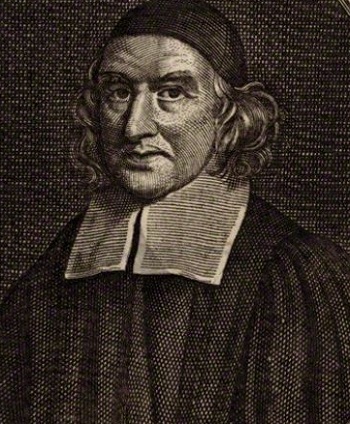
Rev. Thomas M. Gouge (1605-1681)
Preparing for Revival
The foundation to the Welsh revival was laid through the sending of ministers, educators, and Bible translators throughout Wales. The Bible was translated into the Welsh language in 1588, but with most of the population still illiterate, there wasn’t a high demand for it.
In the late 1600s, several significant men began to work tirelessly to start schools, distribute Bibles and Christian literature, and to preach the Gospel throughout Wales. One man, Rev. Thomas Gouge, beginning in his mid-60s, started 300—400 schools in the largest towns throughout Wales.
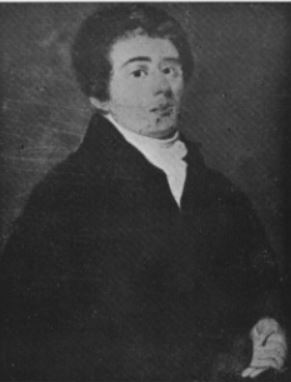
Rev. Griffith Jones
Rev. Griffith Jones (1684 – 1761)
Griffith Jones is regarded as being the greatest Welshman who has ever lived. This honor was ascribed to him not only because he was a powerful and effective preacher, but also because during his lifetime, through his literacy work, Wales became a literate nation.
The purpose of Jones’ literacy work was for the conversion of the nation and educating them in Christian beliefs and values. Without government funding, Jones established Circulating Schools. These schools would be set up in churches or barns. They would last three months in one location, then move to another location. Two thirds of these schools were comprised of adults, some reaching into their 70s. According to The Life and Times of Griffith Jones, by 1777 the total number of schools that had been established was 6,465, and the number of students who had been enrolled was 314,051.
The population of Wales in the mid-1700s was around 450,000, meaning that the number of students who had been educated in these schools reached almost 70% of the nation’s population.
The schoolteachers had a primary responsibility toward Christian education, as one man wrote:
The duty of these men was to teach the people to read the Scriptures in the Welsh language, to catechise them [teach through question and answer], to instruct them in psalmody, and to promote their religious advancement by every means in their power.
The result of this literacy training, was,
Half-empty churches were filled, holy communion was more regularly administered, the Sabbath was better observed, the evils of swearing and drinking were checked. Griffith Jones records that the reformed behaviour of the young people, who gave up dancing on the Sabbath to ‘read good Books, hear God’s Word and pray by themselves, caused ‘a great outcry among the wicked Fidlers and Harpers, whom the young creatures had hired by the year to play to them upon Sundays.’
With an increasingly literate nation, and the availability of the Scriptures and other Christian literature in the Welsh language, Jones’ work set the stage for the Methodist revivals that swept across Wales till the early 1900s.
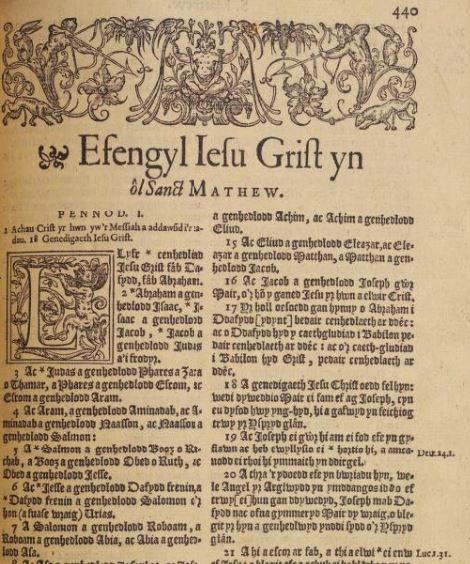
Matthew Chapter 1 of the Welsh Bible, from the 1588 translation by William Morgan
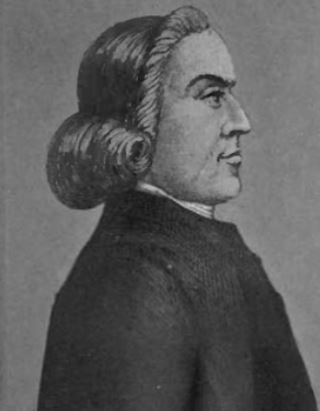
Evangelist Howell Harris
Howell Harris (1714 – 1773)
After his conversion in 1735, Harris began to preach from house to house in his native county of Brecknockshire. He then began preaching in adjacent counties, and soon was traveling throughout all of Wales. Large crowds would attend his meetings and his preaching was with such power and authority that many would “cry out” during his preaching, being overcome by the conviction of sin.
In the space of three years Harris had established 300 societies (classes, or home Bible studies for new converts). These societies then began assembling in a common location every month, and then every quarter. Eventually they became the Welsh Calvinistic Methodist denomination. Harris went on to become famously known as a leader in the Welsh Methodist Revival, as well as the “Founder of the Calvinistic Methodist Church”.

Welsh counties and towns mentioned in this story.
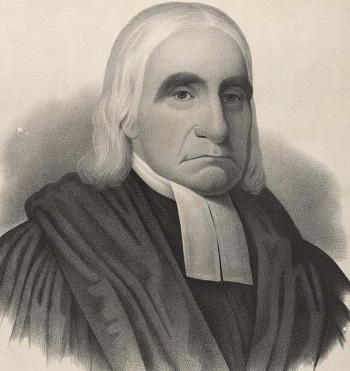
Rev. Daniel Rowlands
Rev. Daniel Rowlands (1711 – 1790)
Converted through the preaching of Griffith Jones, Daniel Rowlands went on to work alongside Howell Harris in evangelistic efforts. Rowlands’ popularity and eloquence grew so much that people would travel the distance of 100 miles to hear him preach. Under his ministry, in the town of Llangeitho, there were seven revivals at different periods throughout his lifetime. This town received greater revival blessings than any other location during the Welsh Methodist Revival.
The first revival in Rowlands’ ministry occurred at the Llangeitho church while he was reading, or praying, the words in the Anglican Prayer Book before his congregation. His biographer wrote of this occasion:
The touching and melting manner in which Rowlands repeated these words, affected the whole assembly so much, that they almost all wept, and wept loudly… Many in the congregation were really convinced and converted, as their subsequent conduct proved.
What transpired in the church building was but the beginning, because
This awakening spread throughout the three parishes under his [Rowlands’] pastoral care, and many were savingly impressed.
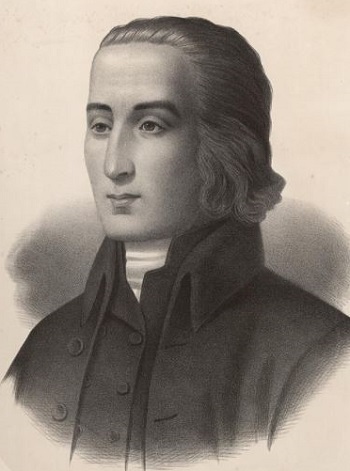
Song Writer: William Williams Pantycelyn
A subsequent revival occurred in Llangeitho during a church service in 1762, and it was the result of the introduction of a new hymnal by William Williams Pantycelyn:
There was such rejoicing that people were jumping and leaping for joy. This demonstration of exuberance resulted in those involved in this local revival to be referred to as “Jumpers.”
This second revival spread throughout Cardiganshire (Ceredigion) and several other counties, even reaching North Wales.
Speaking of these revivals, the famous evangelist George Whitefield remarked,
Blessed be God, there seems to be a noble spirit gone out into Wales. People make nothing of coming 20 miles [by foot] to hear a sermon, and great numbers there are who have not only been hearers but doers also of the word, so that there is a most comfortable prospect of the spreading of the Gospel in Wales.
Revivals frequently followed Rowlands’ ministry, and at one of those revivals where Rowlands was preaching, wherein thousands were saved, one out of that number was Thomas Charles, who went on to initiate a revival in Bala.
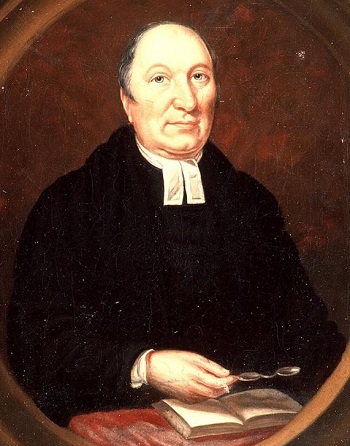
Rev. Thomas Charles
Thomas Charles (1755 – 1814)
Thomas Charles was born again under the preaching of Daniel Rowlands, and after becoming ordained in 1778, he began his ministry in Bala. It was in Bala where he had invited poor children into his home for teaching. The home soon became too small and Charles was offered the use of the Calvinistic Methodist Church to conduct his classes.
Revival at Bala
The revival in Bala began in the schools, with the children ages 6–12, as well as the other young people, being the ones who were the most impacted. These young people came under severe conviction of sin, and just as powerfully, following their conversion, experienced tremendous joy.
During this revival it was extremely easy to evangelize as the people’s hearts and minds were powerfully transformed by the Holy Spirit, creating an irresistible power, drawing people to Himself while illuminating them with the Gospel.
What Helped Retain the Harvest of Souls
The churches were prepared for the influx of souls, due to the Methodist’s “method” of immediately joining new converts into a society, small group, or class, wherein thorough discipleship was conducted.
Results of the Revivals
► The Gospel was preached and received throughout Wales.
► Even though not everyone wholly turned to the Lord, there were few, if any, throughout the entire nation, that didn’t come under severe conviction of sin.
► The profound conviction of sin would often last only a few weeks, but following that, the preaching of the Word of God was still very powerful.
► Conviction of sin was a hallmark of the revivals.
► Churches everywhere were filled with the spirit of thanksgiving and prayer.
► In Caernavonshire and Anglesey, thousands would gather for church services.
► In the county of Caernarvonshire, in just three months, hundreds of people were converted.
► There was a dramatic transformation of religious sentiment and behavior.
► The thirst for the Word of God was profound, as was the delight in conversations about spiritual topics.
► Various types of entertainments came to an end, and the pursuit of God’s glory and the salvation of souls became a central focus.
► The revivals had a large impact upon children in the schools.
Sources
► A Brief Account of the Life of Howell Harris by Howell Harris
► Griffith Jones: Revival’s Morning Star by Welldigger
► How One Man Made Wales One of the Most Literate Countries in Europe by europeana
► Life and Times of Griffith Jones by David Jones
► Narratives of Revivals of Religion in Scotland, Ireland, and Wales by Anonymous
► The Life of Howell Harris by Hugh J. Hughes
► The Works of the Late Reverend and Pious Mr. Thomas Gouge by Thomas Gouge
Return to List of Revival Stories
Chet & Phyllis Swearingen:
Office: (260) 920-8248
romans1015@outlook.com
Beautiful Feet
P.O. Box 915
Auburn, IN 46706

